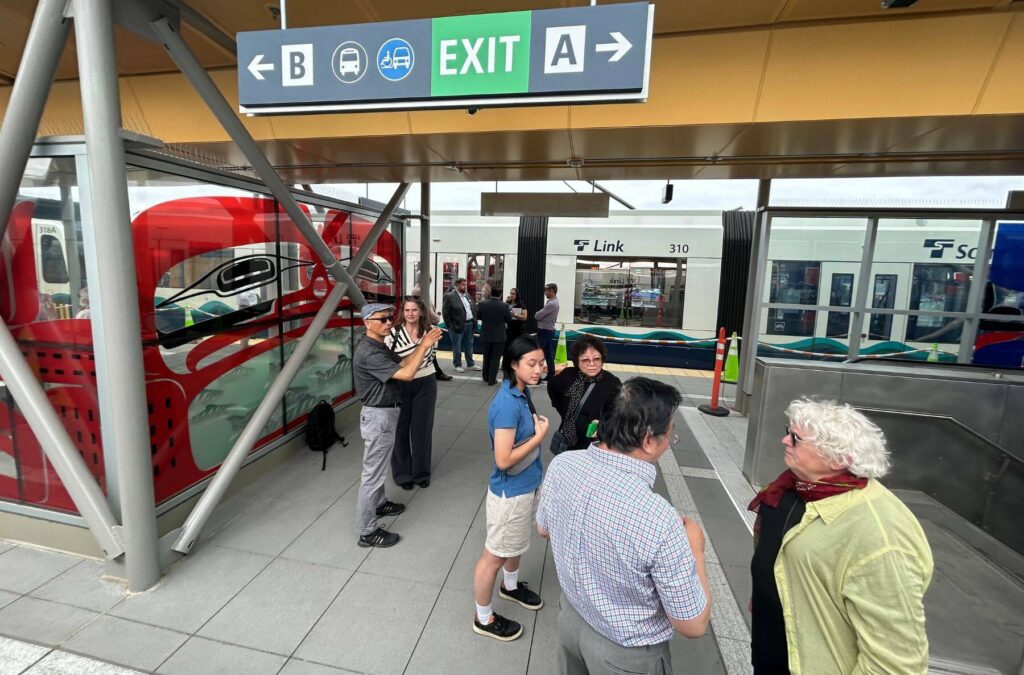LYNNWOOD — Two sculptures, one of a hummingbird and the other a kitchen window, stand outside the Lynnwood Transit Center.
Behind them, two 30-foot-tall street lamps — in the style of an oil lamp — light the nearby bus stop. Above, colorful artwork from Preston Singletary and David Franklin, titled “Generational Confluence,” covers windows around the light rail station.
All are part of a Sound Transit effort to add public art to its stations. The agency commits 1% of construction budgets for large projects to art. On Tuesday, 17 days before light rail service begins in Lynnwood, agency officials and artists came to the station to speak on the pieces.
“Community representatives and art and design professionals chose eight Pacific Northwest artists to integrate art into the station designs so that the stations themselves integrate into the communities we serve,” Sound Transit board chair and King County Executive Dow Constantine said.
Claudia Fitch designed the lamps, hummingbird and kitchen window. She designed the lamps in 2003 and are called “Shift.” The hummingbird towers over the central plaza of the Lynnwood Transit Center, with the nearby kitchen window serving as something of a backdrop to the avian sculpture.
Fitch said before designing the sculpture, she spoke with transit riders at City Hall and around town. She asked what they identified Lynnwood with and what kept them there.
“Overwhelmingly, the word was nature,” she said.
Fitch encountered a hummingbird around some nearby landscaping that featured native plants. This inspired the bird sculpture, she said. The window, which Fitch also described as a kitchen window with a curtain, was to give it a little more character.
The lamps, meanwhile, are inspired by the original interurban train line, now a trail.
“Infrastructure was really what put Lynnwood on the map,” Fitch said.
Barbara Luecke, Sound Transit’s deputy director of public art, also spoke to the importance of public art.
“(It helps) increase that sense of ownership with passengers who come and go from stations, and when they feel a sense of ownership, a sense of belonging grows, and with belonging, a sense of stewardship grows, and that’s what we want for the whole system,” Luecke said. “Every time we come into a community, we try to treat that community like they’re the most special and important community we’re working with.”
The event Tuesday also served as something of an update on the Link. Trains are now in frequent simulated service and have cleared safety inspections, officials said.
Jordan Hansen: 425-339-3046; jordan.hansen@heraldnet.com; Twitter: @jordyhansen.
Talk to us
> Give us your news tips.
> Send us a letter to the editor.
> More Herald contact information.



























